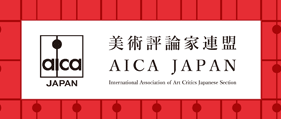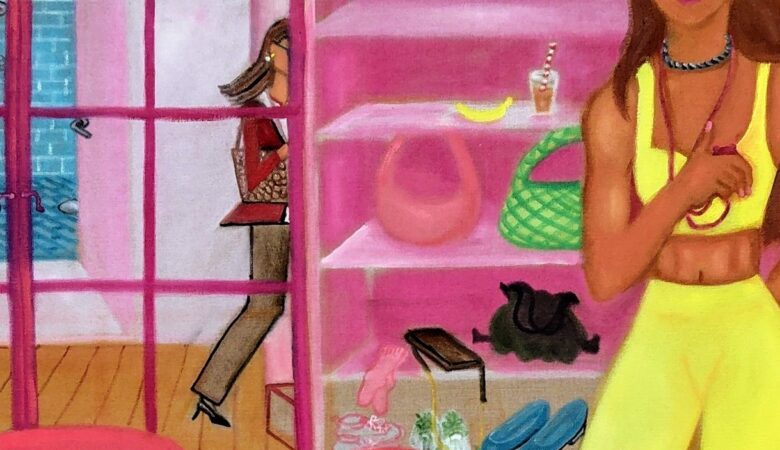Tania Bruguera, or on the Expanded Notion of Participatory Art
Shinya Sugawara
This is the slightly revised English version of this essay originally written in Japanese.
There is the PDF file down below.
Tania Bruguera, a Cuban political artist, has been working on the Tatlin’s Whisper series since 2006, starting with Tatlin’s Whisper #3 and continuing with Tatlin’s Whisper #5 (2008) and Tatlin’s Whisper #6 (2009) to date. This series seeks to bring images that are widely circulating in the media to the audience’s real experience by making them participatory actions that the audience can experience directly[1]. One of the most famous of these is arguably Tatlin’s Whisper #5, which was performed on the bridge in Tate Modern’s Turbine Hall in 2008[2]. The work involves two mounted police officers using various crowd control techniques on the audience who happened to be on the bridge at the time, without announcing that the performance is taking place. In this work, Bruguera uses images in the media of crowd control by the mounted police in protests and riots, especially in Europe, and exposes the audience to such crowd control techniques without informing them that it is a performance, thus reconnecting them to more direct forms of relationship with the commonplace images.
The audience can no longer behave as spectators who come to see famous paintings and sculptures in Tate Modern, or as tourists who visit one of London’s major attractions, but are now involuntarily involved in and forced to participate in crowd control by the mounted policemen, whether they like it or not. In other words, the “participants” of this work are not actively participating in the performance themselves, but rather realize unexpectedly that they are already inside this situation. Bruguera’s work thus confronts people who think they are just spectators or bystanders, with the fact that “you are already inside the situation, you are participating in it”, and further that they have to do with images in the media of crowd control by the mounted police in riots or protests. This work does not attempt to engage active participants through various activities, or to draw them into dialogical and convivial relationships with others, as many other participatory artworks do. It gives the spectators the realization that they are already participating in the situation. Bruguera believes that the situation is not something that can be objectified as if it were separate from you and that you can enter actively from time to time, but rather something that you are inevitably already involved in.
Not only Tatlin’s Whisper #5, but also, say, Trust Workshop / Untitled (Moscow, 2007) and its different version Delayed Patriotism (2007) are based on the similar line of thinking. Here, I will take up the former work as an example, which was presented at the Moscow Biennale in 2007. When the audience enters a small space, there is a photographer who asks them to pose for a photo with live monkeys and eagles. It is not until they receive the finished photo afterwards that the audience realizes that they were photographed in front of a photo of Felix Dzerzhinsky, the founder of the first two state security organizations in the Soviet Union. This work also confronts the audience with the fact that there is always a presence of KGB behind their everyday life, that they are not unrelated to KGB, and that they are participants in a situation where KGB is still active. Therefore, here too, it is not that the audience is activated by the work and actively participates in the situation but rather that through the work they are made aware that they are already implicated in that situation before experiencing the work.
Bruguera repeatedly criticizes the notion of representation, and it also has to do with her idea of being involved in a situation as I described above. In an interview with Roselee Goldberg, she says:
I want to work with reality. Not with the representation of reality. I don’t want my work to represent something. I want people not to look at it but to be in it, sometimes even without knowing it is art. This was a real situation.[3]
For example, paintings and videos that symbolically depict political themes are certainly political works. In fact, most of the works that are generally called political works are like that. However, Bruguera, a self-acknowledged political artist, does not make such works. For her, they are only “representations of reality” and not something that deals directly with reality and acts in the real world. To represent reality in the mediums of painting, video and so forth is to objectify the situation they depict into the form of an artwork and to separate reality from the audience. And such works will be contemplated in the white cube isolated from external reality. But in works like Tatlin’s Whisper #5 and Trust Workshop / Untitled (Moscow, 2007), even if they are performed in museums, the audience can no longer see the work as spectators who distance themselves from reality, but are made aware that they are already in a real situation. That is why Bruguera deliberately did not announce in Tatlin’s Whisper #5 that it was a performance work[4]. If she had announced it beforehand, it would have been recognized just as an artwork by the audience and appreciated as a performance work that is separated from their own reality and therefore unrelated to them, just like watching paintings, sculptures, or video works in other exhibition rooms at Tate Modern. In order not to let that happen, Bruguera avoided announcing it beforehand.
In Tatlin’s Whisper #5, the audience was controlled by the police as if they were “rioters”, but in Tatlin’s Whisper #3, which is less known than the other two works of the same series, the audience was treated in a more radical way, which is close to “illegality”. In this work, people who came to the opening party of a commercial gallery in Madrid found themselves participating in a workshop to make Molotov cocktails[5]. Carrie Lambert-Beatty, an American art historian and critic, says about this work as follows:
Here again, art and art viewing are treated as, or rather, made to be dangerous activities. Bruguera happily sent her audience out into the night armed with Molotov cocktails and the knowledge of how to make them: she actually made them potentially dangerous. Her Arte de Conducta assumes that art viewers are all “political people”. And if we are not, she makes it so.[6]
In Tatlin’s Whisper #5, Bruguera treated people the audience at Tate Modern as “rioters” who might need to be controlled by the police. Similarly, in Tatlin’s Whisper #3, art viewers who probably came to socialize at the opening were not treated as friendly and good bourgeois citizens[7], but rather made to be “potentially dangerous” people who might participate in riots or uprisings and throw Molotov cocktails at the police. Thus, both works focus on the potentiality of art viewers to become “dangerous people”. In addition, it is worth noting that Lambert-Beatty points out that art viewers are seen as “political people”. Bruguera’s works show that art viewers are not people who are separated from reality and watch works from a distance, i.e., spectators or bystanders, but rather “political people” who are always already involved in a political situation. In this way, the figure and role of the audience in participatory art is considerably transformed in Bruguera’s works. The audience are made to recognize that they are already implicated in a situation before they know it and furthermore treated as politically active agents. Bruguera’s works are attempts at political subjectification through her unique form of participatory art.
Bruguera makes not only participatory artworks such as these two works of the Tatlin’s Whisper series and Trust Workshop, but also other types of works, which are not generally categorized as participatory art. Then, what kind of works are they? How do they situate themselves in relation to participatory art? As an example, I will take up Bruguera’s earliest work Tribute to Ana Mendieta, which is not usually classified as participatory art.
This work was a long-term project that was conceived shortly after the death of Cuban-American artist Ana Mendieta in 1985, when Bruguera was still a student in Cuba, and carried out from 1986 to 1996. Bruguera reperformed Mendieta’s performance every time she was invited to exhibitions in Cuba for about 10 years, in addition to exhibiting her own work[8]. This project might be seen as a precursor to the performance reenactments that became popular from the late 1990s to the early 2000s and reached its peak with Marina Abramović’s Seven Easy Pieces at the Guggenheim Museum in New York in 2005. However, Bruguera refuses to classify her own works, such as Tribute to Ana Mendieta, as “performance art” like these, and instead calls them Arte de Conducta in Spanish. This is often translated into English as “behavioral art”, but Bruguera insists on using the Spanish term Arte de Conducta. By doing so, she explicitly claims that it is different from “performance art”, and belongs to a different lineage, especially the Latin American tradition. Bruguera once said that when she moved to Chicago to study performance art, she realized that performance art was linked to the Western art tradition, which has nothing to do with her own, and that her work was more related to political actions and performances in Cuba, Latin America, and former socialist countries[9].
Bruguera explains the difference between Arte de Conducta and performance art (and body art) as follows:
Arte de Conducta is a social gesture and a communicative gesture: it places emphasis not on the body, but social presence. The material is the social field––––attitudes and behaviors–––not the human body. Arte de Conducta asks: how can we use and transform behaviors.[10]
As Bruguera also says in the same interview that performance art is “self-referential (about identity, personal history) and very narrative”[11], performance art (and body art) is closely linked to the performing body and self, whereas Arte de Conducta is more about the social realm that extends beyond the performing body. That is where the major difference between the two lies.
Furthermore, Bruguera claims that Tribute to Ana Mendieta is related to one of the key concepts that represent her work, political timing specificity. What exactly is political timing specificity?[12] Bruguera said she came up with the concept around 2008[13]. She had been calling her work “site-specific” for a long time, but she realized that people tended to focus more on the cultural and anthropological dimensions than on the political dynamics that were her main concern. Thus, she decided to replace site with political timing. Political timing is precisely the medium by which politicians do their work, and Bruguera, as an artist, uses it as the material for her own work, just like politicians do, and on the same level as politicians. It is not enough to make a work as an a posteriori political comment. As mentioned earlier, that would only be a “representation” of a political opinion. Political timing specific art is not a representation of the political, but a political force itself that intervenes in a specific situation at an appropriate moment and even creates a new political situation.
Then, what kind of political situation did Tribute to Ana Mendieta create as a political timing specific art practice? At that time in Cuba, only those who lived in Cuba were officially recognized as Cuban artists by the Cuban government, so Ana Mendieta, an expatriate who was brought to the United States from Cuba at the age of twelve through the so-called “Peter Pan Operation”, was not officially recognized as an artist by the Cuban government. Therefore, this work also involves the whole political issue of Cuban emigration and defection and the Cuban government’s response to it. In response to this situation in Cuba, Bruguera attempted to reposition Mendieta in the Cuban artistic and cultural context by reperforming Mendieta’s work at exhibitions in Cuba without the government’s permission. Therefore, Bruguera did not do the project as a mere homage to Mendieta or as a symbolic expression of her personal opinion. She did it as a concrete and political intervention into the situation with the aim of reintroducing Mendieta and other expatriates into Cuba against the will of the Cuban government. Here, art uses political timing as its medium, which politicians normally use as part of their work, and acts on the same level as politicians, becoming itself a political force to achieve its purpose. At this point, Tribute to Ana Mendieta is directed more at Cuban politicians and the Cuban government than at the audience who is present at the work. By doing this work, Bruguera forces the Cuban government in a provocative way to react to it in some way, and drags them into a discussion about expatriates such as Mendieta, thus creating a new political situation in which the Cuban government has no choice but to participate. Here, art is no longer a representation of the political, but a political force that intervenes in a specific situation at an appropriate moment and creates a new political situation.
Claire Bishop, in her book Artificial Hells, argued for the importance of people who do not participate directly in participatory art works on site, but who appreciate them later through various media such as video, photography, installation, and publications in different places and called them “secondary audiences”[14]. If we apply this concept to our discussion here, we could call the Cuban government, which was not present on site and did not participate directly, a “secondary participant” rather than a “secondary audience”. This work was done in such a way as to involve people who were far away from the site, such as the Cuban government, as participants in a newly created situation. Here again, the “secondary participants” are important. Tribute to Ana Mendieta is not a participatory art in the usual sense, as it seems to be just Bruguera reperforming Mendieta’s performances by herself. However, it can be said that it is classified as “the expanded version of participatory art” in the sense that as political timing specific art it creates a situation that involves people who are not on site (secondary participants)[15]. Tania Bruguera involves politicians in an expanded area beyond the actual site where the work is performed, and draws them into a newly created situation. Then, the politicians realize that they are already participating in the situation, before they know it.
[1] For the whole Tatlin’s Whisper series, see the following.
Andrés David Montenegro Rosero, “Arte de Conducta: On Tania Bruguera’s Tatlin’s Whisper Series”, Charlotte Bonham-Carter and Nicola Mann (eds.) Rhetoric, Social Value and the Arts: But How Does It Work? (London: Palgrave Macmillan, 2017), p.85-106.
[2] It was part of a two-day performance exhibition The Living Currency (La Monnaie Vivante) at Tate Modern, curated by French curator Pierre Bal-Blanc. You can watch a video of the performance and an interview with Bruguera on Tate’s website.
https://www.tate.org.uk/art/artists/tania-bruguera-11982/tania-bruguera-tatlins-whisper-5
[3] Roselee Goldberg and Tania Bruguera, “Being Cuban: Interview II”, Prince Claus (ed.) La Biennale Di Venezia, (Chicago: Lowitz and Son, 2005), p.18. Emphasis by the author.
[4] Bruguera often performs her works without announcing in advance that they are works of art, and makes people participate in them without their knowledge. This method reminds us of the “invisible theater” of Brazilian theater director Augusto Boal. In fact, Claire Bishop points out the similarity between Bruguera’s work Generic Capitalism (2009) and Boal’s “invisible theater” in a recently published interview book with Bruguera. However, as Bruguera tells in the interview, she did not know the concept of “invisible theater” by Boal at the time of Generic Capitalism (and also at the time of Tatlin’s Whisper #5), and learned it for the first time when Tom Finkelpearl introduced it to her in 2011.
Tania Bruguera and Claire Bishop, Tania Bruguera in Conversation with/en Conversación con Claire Bishop, (New York: Fundacion Cisneros, 2020), p.38.
For more on Boal’s “invisible theater”, see the following.
Boal, Augusto. Theater of the Oppressed. Pluto press, 2000.
Claire Bishop, “Chapter 4: The Social Sadism of Explicitness”, Artificial Hells: Participatory Art and the Politics of Spectatorship. Verso 2012.
[5] Of course it was not announced ahead of time that this workshop was to be held on the night of the opening.
[6] Carrie Lambert-Beatty, “Political People: Notes on Arte de Conducta”, Tania Bruguera: on the Political Imaginary, (Milano; New York: Charta, 2009), p.43.
[7] For example, this would be the audience figure that relational art practices are assuming.
[8] Bruguera supposedly reperformed seven performances by Mendieta and reproduced Mendieta’s objects and photographs as well. For more on Tribute to Ana Mendieta, see Bruguera and Bishop, op.cit.
See also Claire Bishop, “Rise to the Occasion”, ARTFORUM, Vol. 57, No. 9, 2019.
[9] Andrés David Montenegro Rosero, op.cit., pp.88-94.
[10] Bruguera and Bishop, op.cit., p.15.
[11] Ibid. p.21.
[12] My explanation of the concept of political timing specificity below mainly draws upon Chapter 2 of Bruguera and Bishop, ibid., and Bishop, “Rise to the Occasion”.
[13] Therefore, Tribute to Ana Mendieta was produced before this concept was born, but Bruguera retrospectively understands that this work was related to political timing specificity. Bruguera and Bishop, op.cit., p.45.
[14] See Bishop, Artificial Hells, p. 272.
[15] This is also related to the fact that Bruguera refuses to call her project in Tribute to Ana Mendieta a reenactment and instead uses the term redoing. What Bruguera was doing there was not reproducing legendary performances but redoing them in relation to the contemporary situation. Therefore, in this sense as well, Bruguera’s work is different and irrelevant from the performance reenactments that became popular in the Western context from the late 1990s to the early 2000s. Bruguera thinks that the performance reenactments lack an appropriate relationship with the current situation.
Skip to PDF content












